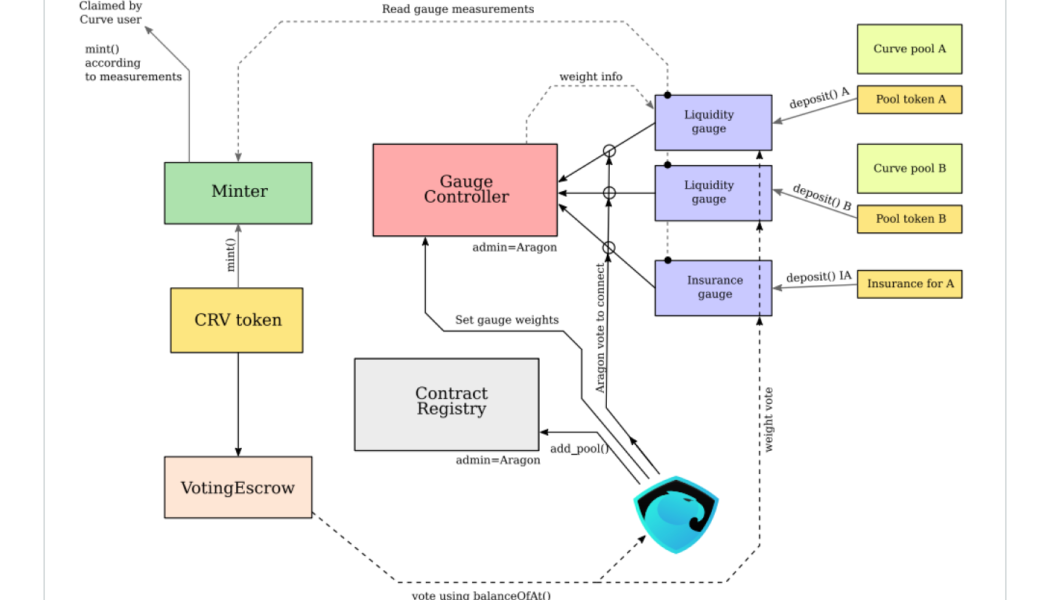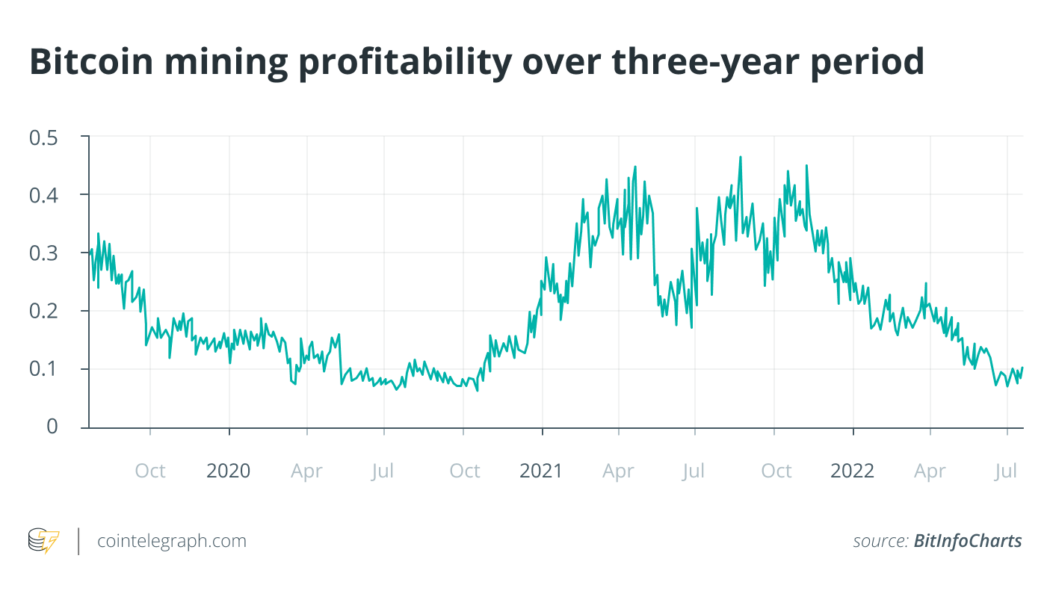Tokens
What is veTokenomics and how does it work?
All facets of a token’s production and management, including its allocation to various stakeholders, supply, token burn schedules and distribution, are managed through tokenomics analysis. Tokenomics help to determine the potential value of decentralized finance (DeFi) projects. Since the law of supply and demand cannot be changed, tokenomics dramatically impacts the worth of each nonfungible token (NFT) or cryptocurrency. Related: What is Tokenomics? A beginner’s guide on supply and demand of cryptocurrencies However, there are various loopholes in the tokenomics design, such as a substantial initial supply allocation to insiders, which may be a pump and dump warning sign. Also, there is no manual on how founders, treasury, investors, community and protocol designers should split th...
Ripples of Bitcoin adoption at Biarritz’s Surfin Bitcoin Conference in France
A sublime sunset enveloped Biarritz Casino on Aug. 27, bringing France’s largest Bitcoin (BTC) conference to a close. Located in southwest France and organized by French Bitcoin exchange Stackin Sat, Surfin Bitcoin assembled a host of Bitcoin OG’s, newbies and no coiners, those yet to buy or earn crypto, in a setting that would rival any Hollywood film set. Bitcoiners networked in the hope of learning more about the Lightning Network, landing jobs at one of the many French Bitcoin companies present — from Galoy Money to Découvre Bitcoin — or simply rubbing shoulders with fellow Bitcoin believers. In a touch of bear market irony, as the Bitcoin chips are currently way down, the event venue took place at the illustrious Biarritz Casino. From Bitcoin core maintainers to European royalty...
Crypto winter teaches tough lessons about custody and taking control
The crypto winter has pumped new life into the adage “Not your keys, not your coins,” particularly after the collapse of some high-profile enterprises like the Celsius Network, whose funds were frozen in June. Just last week, Ledger CEO Pascal Gauthier hammered home the point further, warning: “Don’t trust your coins and your private keys to anyone because you don’t know what they’re going to do with it.” The basic idea behind the adage, familiar to many crypto veterans, is that if you don’t personally hold your private keys (i.e., passwords) in an offline “cold wallet,” then you don’t really control your digital assets. But, Gauthier was also framing the issue in a larger context as the world moves from Web2 to Web3: “A lot of people are still in Web2 […] because they want to stay i...
Why interoperability is the key to blockchain technology’s mass adoption
Every year, we see new blockchain networks being developed to tackle specific niches within certain industries, each blockchain having specialized functions based on its purpose. For example, layer-2 scaling solutions like Polygon are built to have ultra-low transaction fees and fast settlement times. The increase in the number of new blockchain networks is also a result of the recognition that there is no one perfect solution that will be able to meet all of the needs associated with blockchain technology all at once. Therefore, as more organizations become aware of this rising technology and its capabilities, the interconnection of these unique blockchains is becoming necessary. What is interoperability? Blockchain interoperability refers to a wide variety of methods that enable many blo...
Blockchain audits: The steps to ensure a network is secure
The last few years have seen blockchain platforms becoming the centerpiece of many tech conversations across the globe. This is because the technology not only lies at the heart of almost all cryptocurrencies in existence today but also supports a range of independent applications. In this regard, it should be noted that the use of blockchain has permeated into a host of novel sectors, including banking, finance, supply chain management, healthcare and gaming, among many others. As a result of this growing popularity, discussions pertaining to blockchain audits have increased considerably, and rightly so. While blockchains allow for decentralized peer-to-peer transactions between individuals and companies, they are not immune to issues of hacking and third-party infiltration. Just a ...
How to tell if a cryptocurrency project is a Ponzi scheme
The crypto world has experienced an increase in Ponzi schemes since 2016 when the market gained mainstream prominence. Many shady investment programs are designed to take advantage of the hype behind cryptocurrency booms to beguile impressionable investors. Ponzi schemes have become rampant in the sector primarily due to the decentralized nature of blockchain technology which enables scammers to sidestep centralized monetary authorities who would otherwise flag or freeze suspicious transactions. The immutable nature of blockchain systems that makes fund transfers irreversible also works in the scammers’ favor by making it harder for Ponzi victims to get their money back. Speaking to Cointelegraph earlier this week, KuCoin exchange CEO Johnny Lyu said that the sector was fertile ground for ...
Decentralized finance faces multiple barriers to mainstream adoption
Decentralized finance (DeFi) is a growing market popular with experienced crypto users. However, there are some roadblocks regarding mass adoption when it comes to the average non-technical investor. DeFi is a blockchain-based approach to delivering financial services that don’t rely on centralized intermediaries but instead use automated programs. These automated programs are known as smart contracts, enabling users to automatically trade and move assets on the blockchain. Protocols in the DeFi space include decentralized exchanges (DEXs), lending and borrowing platforms and yield farms. Since there are no centralized intermediaries, it’s easier for users to get involved in the DeFi ecosystem, but there are also increased risks. These risks include vulnerabilities in a protocol’s co...
Crypto contagion deters investors in near term, but fundamentals stay strong
The past six-odd months have been nothing short of a financial soap opera for the cryptocurrency market, with more drama seemingly unfolding every other day. To this point, since the start of May, a growing number of major crypto entities have been tumbling like dominoes, with the trend likely to continue in the near term. The contagion, for the lack of a better word, was sparked by the collapse of the Terra ecosystem back in May, wherein the project’s associated digital currencies became worthless almost overnight. Following the event, crypto lending platform Celsius faced bankruptcy. Then Zipmex, a Singapore-based cryptocurrency exchange, froze all customer withdrawals, a move that was mirrored by crypto financial service provider Babel Finance late last month. It is worth noting that si...
3AC: A $10B hedge fund gone bust with founders on the run
Three Arrow Capital (3AC), a Singapore-based crypto hedge fund that at one point managed over $10 billion worth of assets, became one of the many crypto firms that went bankrupt in this bear market. However, the fall of 3AC wasn’t purely a market-driven phenomenon. As more information surfaced, the collapse looked more like a self-inflicted crisis brought upon by an unchecked decision-making process. To put it concisely, the hedge fund made a series of large directional trades in Grayscale Bitcoin Trust (GBTC), Luna Classic (LUNC) and Staked Ether (stETH) and borrowed funds from over 20 large institutions. The May crypto crash led to a series of spiral investment collapse for the hedge fund. The firm went bust and the loan defaults have led to mass contagion in crypto. The first hint...
‘Game yet to begin’ for security token offerings, INX exec says
Despite some of the first security token offerings (STO) launching at least four years ago, the STO industry is still yet to take off, according to an executive at the INX cryptocurrency trading platform. The STO industry is still nascent compared to the overall digital asset industry as companies and individuals are just getting into the field, INX’s chief business officer Douglas Borthwick said in an interview with Cointelegraph. According to Borthwick, there is still a huge educational gap between those who are aware of STOs and those who have never heard of the term. Also known as a tokenized initial public offering (IPO), an STO is a type of public offering involving sales of tokenized digital securities, or security tokens, on security token exchanges. Security tokens can be used to ...
Sentiment and inflation: Factors putting pressure on Bitcoin price
Subsequently, there are fears that Bitcoin prices will take longer to recover. Bitcoin (BTC) has been hovering around the $20,000 range for several weeks now after the coin lost over 60% of its value from its peak in November. The recent plunge wiped out over $600 million from its market cap and caused rising concerns of a bubble burst. Negative investor sentiment Cryptocurrency investors have been on edge since Bitcoin’s fall to around $20,000. Many of them fear that more unprecedented selloffs by key players could precipitate a bigger downtrend. Further declines are likely to amplify losses and make it harder for the market to recover in the medium term. As such, many investors are holding off additional investments. Besides the fall of cryptocurrencies, the decimation of linchpin crypto...
Not just Bitcoin price: Factors affecting BTC miner profitability
The ongoing cryptocurrency bear market has triggered a massive decline in Bitcoin (BTC) mining profitability as BTC mining expenses outpace the price of Bitcoin. Closely tied to the drop in the BTC price, Bitcoin mining profitability has been tanking since late 2021 and reached its lowest multi-month levels in early July 2022. According to data from crypto tracking website Bitinfocharts, BTC mining profitability tumbled to as low as $0.07 per day per 1 terahash per second (THash/s) on July 1, 2022, touching the lowest level since October 2020. The decline in BTC mining profitability has caused some big changes in the crypto mining industry. Lower Bitcoin prices fueled selling pressure as miners were pushed to sell their BTC to continue mining and pay for electricity. The majority of big cr...























